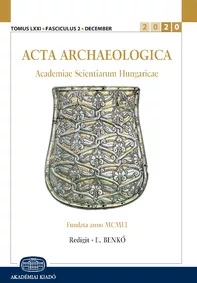High-status Avar warriors identified. Differences in the prevalence of the horse riding syndrome in “high-status” vs. “low-status” adult male burials in the Avar cemetery of Wien 11-Csokorgasse (seventh–eighth century AD)
High-status Avar warriors identified. Differences in the prevalence of the horse riding syndrome in “high-status” vs. “low-status” adult male burials in the Avar cemetery of Wien 11-Csokorgasse (seventh–eighth century AD)
Author(s): Birgit Bühler, Sylvia KirchengastSubject(s): Archaeology, 6th to 12th Centuries
Published by: Akadémiai Kiadó
Keywords: Avar archaeology; horse riding syndrome; human osteology; mortuary archaeology
Summary/Abstract: Bioarchaeology can contribute to interdisciplinary research on the social organization of the Avar Empire (568 AD to around 800 AD) by providing information on the health, lifestyle and habitual activity patterns of Avar populations, thus offering an important, additional perspective to traditional archaeological methods focusing on material culture. The so-called horse riding syndrome refers to a combination of changes on the human skeleton, which may indicate that the individual in question practised horse riding as a habitual activity during his or her lifetime. The aim of this paper is to identify potential differences in habitual horse riding activity between different socioeconomic groups within the adult male population of the Avar cemetery of Wien 11-Csokorgasse, using a major criterion of the horse riding syndrome (namely the ovalization or vertical elongation of the acetabulum) and an indicator of social status in burials of Avar men (namely the depth of burial). The sample included only males (age group adult or older) with at least one completely preserved acetabulum (n = 38 for the left acetabulum, n = 40 for the right acetabulum). The ovalization of the acetabulum was determined using a basic measurement method, the Index of Ovalization of Acetabulum (IOA). The sample was divided into two groups according to depth of burial: The “high-status” group included the skeletal material of adult male individuals with a depth of burial of 1.00 m or more. The “low-status” group included the skeletal material of adult male individuals with a depth of burial less than 1.00 m. We observed highly significant differences regarding the ovalization of the acetabulum between “high-status” and “low-status” adult males. This may reflect considerable variation in lifestyle and/or habitual activity patterns between these two groups, which could suggest differences regarding the prevalence of habitual horse riding between “high-status” and “low-status” adult males. Hence, using a major criterion of the “horse riding syndrome” – the “ovalization” of the acetabulum – we may have identified a group of “high-status” Avar warriors, whose way of life appears to have differed from that of the “lower-status” male population buried in the Avar-period cemetery of Wien 11-Csokorgasse.
Journal: Acta Archaeologica Academiae Scientiarum Hungaricae
- Issue Year: 73/2022
- Issue No: 1
- Page Range: 81-92
- Page Count: 12
- Language: English
- Content File-PDF

